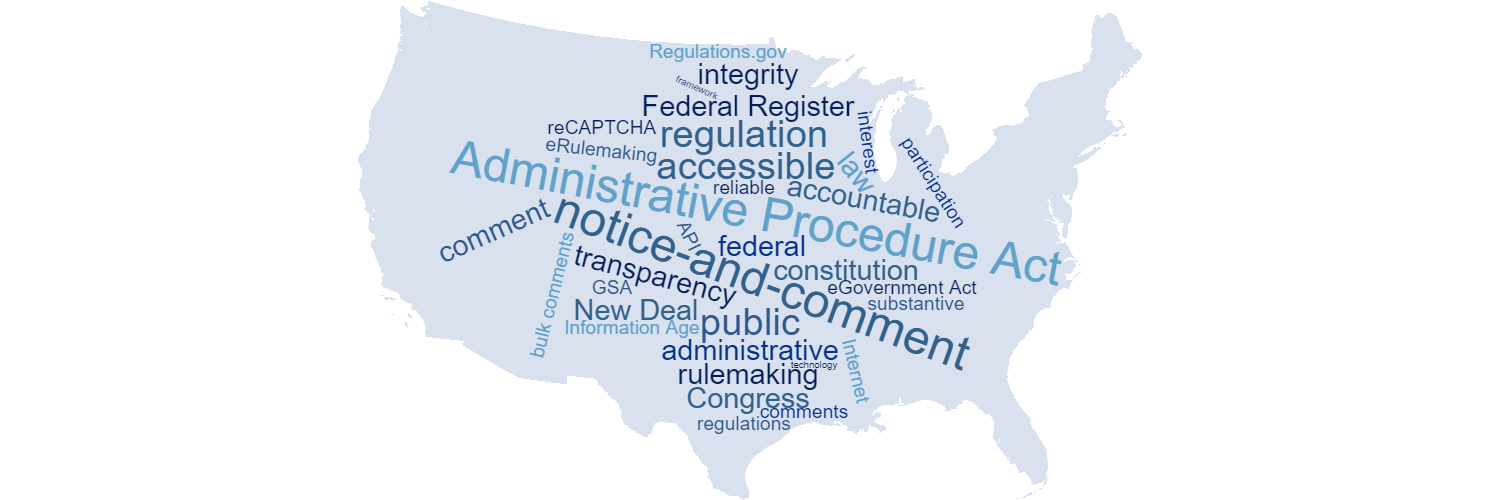
Celebrating the 75th anniversary of the Administrative Procedure Act
Post filed in: Policy
The Administrative Procedure Act (APA) of 1946 celebrates its 75th anniversary on June 11, 2021. When it was established, U.S. Senator Pat McCarron called the APA “a bill of rights for the hundreds of thousands of Americans whose affairs are controlled or regulated” by federal government agencies. Its most widely recognized component is the “notice-and-comment” process for federal rulemaking. Federal agencies develop rules and regulations to implement laws passed by the Congress.
Public comments help shape the regulations that govern our society. Agencies are required to notify the public of proposed rulemakings, give the public opportunity to comment, and consider substantive comments in finalizing a regulation. A good comment is not just an opinion; it cites particular concerns with a proposed regulation. Even better, a public comment makes specific recommendations to improve the proposed rule or regulation.
The APA ensures public transparency in the rulemaking process, while holding the government accountable to address public input. Transparency and accountability ensure integrity throughout the process.
How did it all start?
The 1930s New Deal established a number of federal programs and agencies. This federal “baby boom” brought a sudden growth in law and regulations. Congress was concerned agencies would not operate transparently as they developed regulations during the Great Depression.
So Congress passed the Administrative Procedure Act, creating the notice-and-comment rulemaking process. The APA requires agencies:
- give the public the opportunity to comment on rulemakings and summarize those comments when publishing a final rule;
- give any interested person or organization the right to comment;
- consider all “reliable and substantial” comments; and
- respond to data and evidence.
Paper, paper, paper
Proposed and pending regulations were — and still are — published daily in the Federal Register. Before 1994 only hard copies were available. People could pay for a subscription or visit a Federal Reading Room, typically located at a university library or agency headquarters.
Interested parties would mail letters, petitions, or their own reports or studies on a topic. Some high-profile regulations attracted high volumes of mail. Today, agencies still accept comments by mail.
The arrival of the Information Age
The E-Government Act of 2002 moved government services to internet-based platforms, improving public accessibility. The Federal Register became available online. The widespread use of email made it easier for the public to participate. The eRulemaking Program and Regulations.gov were established to support digitized notice-and-comment rulemaking.
Moving the rulemaking process online drove greater public interest and participation. However, Regulations.gov’s commenting system received massive volumes of comments, many of which were identical or similar.
Growing concerns over mass and “fake” comments
Mass comments are typically submitted by organizations on behalf of their constituents, such as advocacy organizations, special interest groups, or marketing associations. While this is legitimate, many mass comments dubbed “fake” have been submitted by bad actors under false identities with the goal of disrupting the legitimacy of the rulemaking process.
For example, the Federal Communications Commission received 22 million comments in the net neutrality rulemaking of 2016. Of these, approximately 19 million were fake comments.
The challenge is for agencies to effectively manage mass comments and recognize some comments may be fake and to discern the “reliable and substantial” ones.
Enhancing the system
GSA launched a new version of Regulations.gov in February 2021, 18 months after taking over the program. Updates benefit both the public and federal agencies and constitute an important step forward in improving the integrity of the public commenting process.
Recent updates involved two major changes.
First, GSA implemented reCAPTCHA for Regulations.gov, so only “real people” can access the site. You know this as checking the “I am not a robot” box. You can still submit individual comments anonymously.
Second, GSA implemented a comment application programming interface (API) to allow authorized entities to post bulk comments. Bulk comments are when organizations collect comments from their members and submit them together, rather than having members submit them individually. GSA verifies the API users “are who they say they are.”
While technology has changed since 1946, the APA’s cornerstone priorities persevere: transparency, accountability, and integrity. Notice-and-comment rulemaking remains the foundation. Building on this foundation, GSA continues to explore new and better ways of engaging the public in the federal rulemaking process.

 U.S. General Services Administration
U.S. General Services Administration
